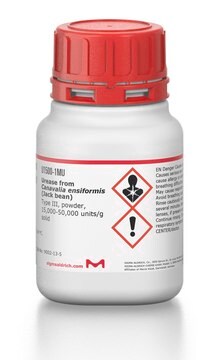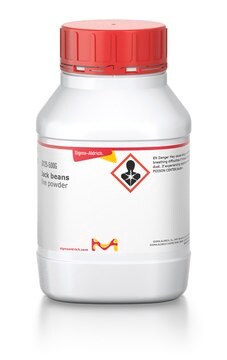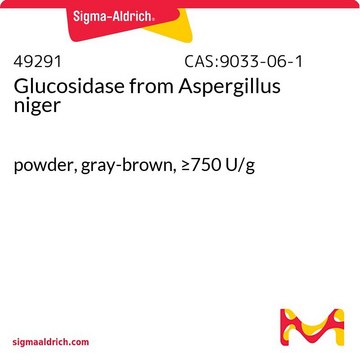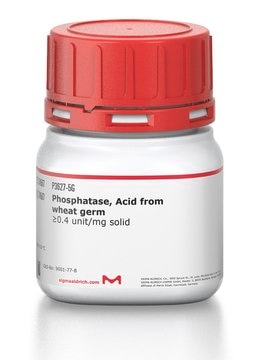U3383
Urease Buffer Reagent
Synonym(s):
Urea colorimetric determination assay reagent
About This Item
Recommended Products
description
When reconstituted, product is a solution of urease from Jack bean in 27 mM EDTA with 0.1% sodium azide as a preservative.
Quality Level
form
powder
mol wt
545 kDa
storage temp.
2-8°C
General description
Application
- to measure plasma urea N (PUN) by the hypochlorite-phenol nitroprusside method
- in cell viability assay to measure the synthesis of urea in human fetal stem/progenitor cells
- to study the metabolic capacity of rat hepatocytes
Signal Word
Danger
Hazard Statements
Precautionary Statements
Hazard Classifications
Eye Irrit. 2 - Resp. Sens. 1 - Skin Irrit. 2
Storage Class Code
13 - Non Combustible Solids
WGK
WGK 1
Flash Point(F)
Not applicable
Flash Point(C)
Not applicable
Personal Protective Equipment
Certificates of Analysis (COA)
Search for Certificates of Analysis (COA) by entering the products Lot/Batch Number. Lot and Batch Numbers can be found on a product’s label following the words ‘Lot’ or ‘Batch’.
Already Own This Product?
Find documentation for the products that you have recently purchased in the Document Library.
Customers Also Viewed
Our team of scientists has experience in all areas of research including Life Science, Material Science, Chemical Synthesis, Chromatography, Analytical and many others.
Contact Technical Service











